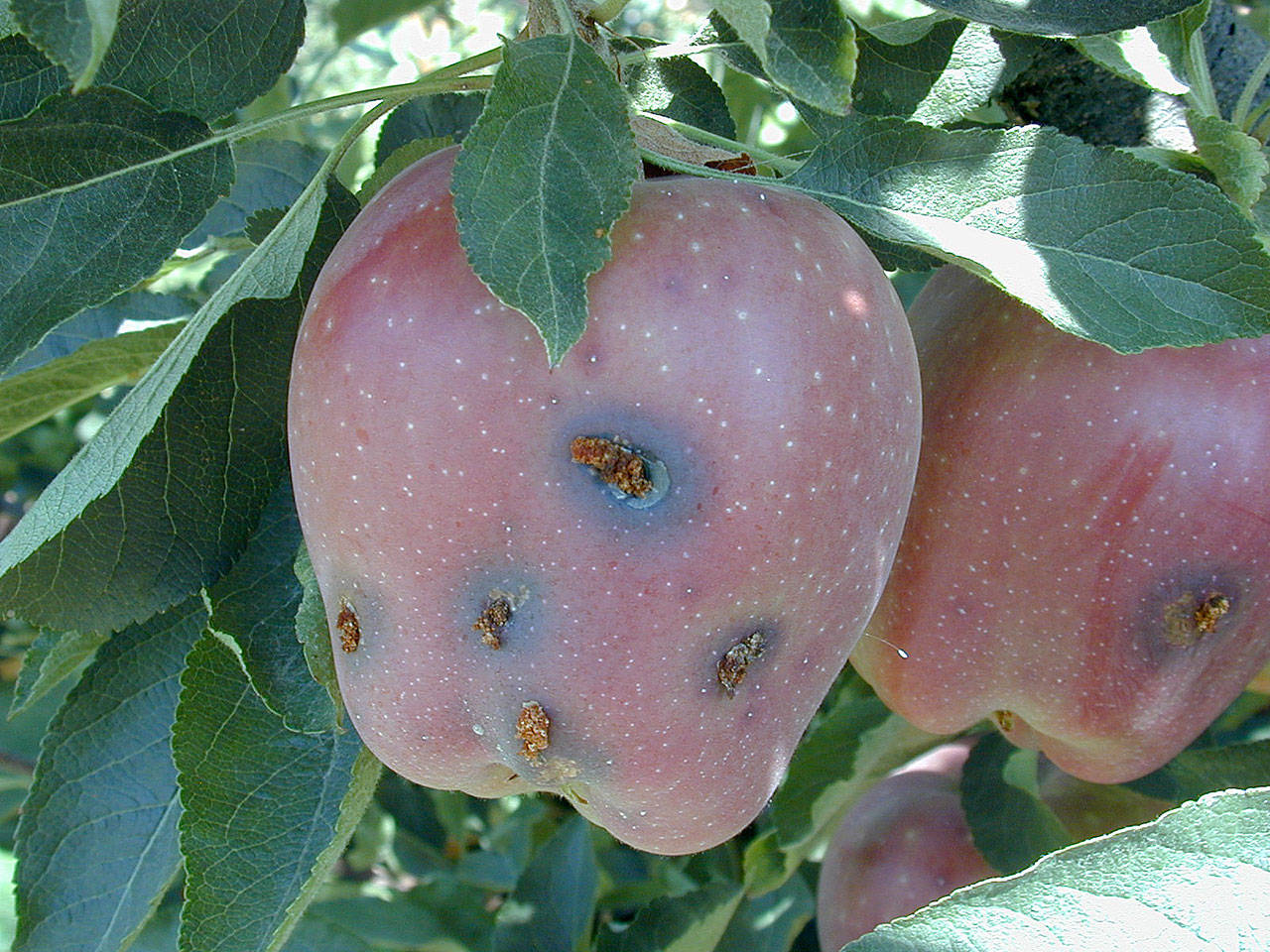The WSU Clallam County Extension reported an increase in coddling moth, a serious apple tree pest, in local orchards in 2017.
The pest has impacted not only the apple harvests of home growers but harvests by the Clallam County Gleaning Group which each year supplies thousands of pounds of apples to local food banks, senior centers and school children.
Codling moth larvae (caterpillars) damage apples by tunneling through the flesh to the core. The larvae eat the seeds, causing the fruit to stop growing and drop prematurely. Even if apples do not fall from the tree, rot-causing bacteria and fungi invade the flesh of the apple along the track of the larva rendering affected fruit largely unusable.
Know your pest
Understanding the life cycle of the codling moth is critical to its control.
Adult codling moths emerge in the spring and lay eggs about the size of a pin head on young apple leaves or fruit. In about a week, the eggs hatch into tiny larvae that tunnel their way into the core of the apple where they feed.
After about a month, the larvae (now about half an inch long) tunnel out of the fruit and make cocoons under loose bark on the tree trunk or in the soil beneath the tree. They pupate and produce another generation of adult moths in a couple of weeks, starting the cycle all over again.
In Washington state, this cycle (called a generation) happens two to three times each summer. Toward the end of the growing season, mature larvae do not transform into adults but overwinter to start the cycle again the following spring.
What to do
Control of codling moth is difficult. Pesticides are only effective against the newly-hatched larvae before they burrow into the fruit and must be carefully timed and repeated. WSU does not generally recommend the use of pesticides for codling moth by home growers.
WSU does recommend the following steps to suppress coddling moth populations in home orchards:
• During the growing season, periodically scout your apple trees for insect-infested fruit. Characteristic findings of coddling moth include larval entry holes on the fruit marked by reddish-brown droppings (called frass) and dirty brown or rotten-looking cores.
• Pick off and destroy infested fruit. Do not compost the fruit as it will not kill the larvae and could actually spread the problem. Rather place the fruit in a plastic bag and leave it in the hot sun for a week.
• Pick up and discard all windfalls immediately because they might still harbor larvae.
Home growers can also trap mature larvae that climb up the tree to spin cocoons by placing a narrow strip of corrugated cardboard around the base of the tree. Periodic removal and crushing of the cardboard will destroy the cocoons.
To protect fruit from codling moth home growers can:
• Bag the fruit while on the tree. The bags physically prevent the moths from landing on the fruit surface and laying eggs or the larva from burrowing into the fruit.
• Spray the trees with kaolin clay. The clay forms a barrier on the fruit and leaves that irritates the moths and disguises the host tree so that moths fly to other host trees to lay their eggs.
Codling consequences
For success, however, both of these approaches must be properly timed and neither will suppress the codling moth population if other host trees are nearby.
If codling moth is not controlled when first seen, the problem will spread. Within two to three years, 85-90 percent of the apples on an infested tree will become affected.
Because adult moths can fly a substantial distance, the pest also can spread to the trees of neighbors and commercial orchards.
Be a good fruit tree steward (see sidebar). If you have seen signs and symptoms of codling moth on your apple trees, take actions to control the problem. If you have not, be on the lookout … it could be coming your way.
Jeanette Stehr-Green is a WSU-certified Clallam County Master Gardener.


